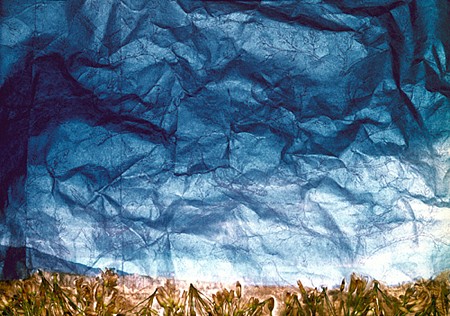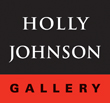
REVIEW: Dornith Doherty in Dallas Morning News
December 20, 2007 - Charissa N. Terranova
Dornith Doherty layers object upon image in her nature photographs
To call upon Mother Nature, whether by way of a hike through the woods or in a landscape photograph, is to intervene. It is to leave the mark, the stain, of human presence.
The layered photographic images of Dornith Doherty at the Holly Johnson Gallery describe a world in which nature is all used up.
Ms. Doherty does not just make landscape photographs, she constructs them. Wild Plum is a photograph of a photograph with objects sitting on its surface. A branch from a tree in blossom sits atop a veil of crumpled paper. The billowy cumulus clouds in the photograph mingle with the white paper.
Instead of creating tension, the paper and photograph harmonize as two distinct textures of light. The photographic image is most evident in the bottom right corner, where civilization can be seen in the form of a telephone pole and buildings.
Ms. Doherty's constructions tell not only of the spent quality of nature in the new millennium but also of the way humans tend to idealize it. When we "get back to nature" we are really manufacturing, constructing, an idea of something long lost or perhaps that never was.
Ms. Doherty's photographic layering of image and object has been compared to Joseph Cornell's wielding of image and object in his shadow boxes. As a native of Houston, Ms. Doherty would be familiar with Cornell's work, since the Menil Collection holds several of his pieces. For Cornell, the placement of object against image was a surrealist endeavor, a concern for the found object and the dreamscape. Ms. Doherty's layering has more to do with the content of the photograph and the act of manufacturing a picture.
Showing real nature against a depiction of nature – as in Cumulus, where cockle-shaped flowers are strewn across the surface of paper atop a photo – raises the question of definition. Which is real: the photograph of a flower or an actual flower? One is an image, distilled in space and time by way of the push of a button. The other has been raised on a flower farm, packaged and sold at the neighborhood grocery store. Each is a semblance of the real, but not the real itself.
Ms. Doherty's constructions are for the most part bereft of people. Thistles stands out above the rest because of the woman in the image at base, whose figure is but one gauzy figment among several. An almost-blurry photograph of a woman standing in the wavy water of an ocean sits beneath a filigreed layer of white feathery thistles thrown harum-scarum across the surface.
Charissa N. Terranova is a Dallas freelance writer.
Download Article (PDF)Back to News
